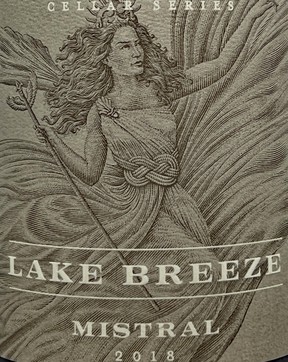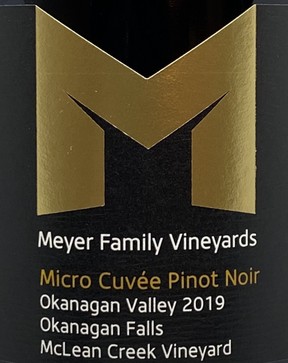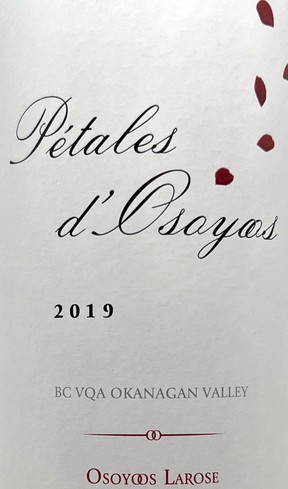Reviews and recommendations are unbiased and products are independently selected. Postmedia may earn an affiliate commission from purchases made through links on this page.
Salut: The hunt for reds in October

Anthony Gismondi offers up 30 B.C. reds that turning heads right now

Article content
The red wines of 2022 will determine their fate over the next few weeks as the harvest progresses from white grapes to the richest reds.
Advertisement 2
Article content
It’s been a challenging year with a slow, cool start that pushed the season back two to three weeks. A hot spell in the summer helped turn the timing around, but at times, it was so hot it caused the vines to shut down during the day, once again pushing the harvest back to mid to late fall. The weather was near perfect all of September, so hopes are high for a better-than-average year, but it all depends on what happens in October.
Article content
For our part, we thought this edition of Salut would be an excellent time to assess the state of red wine in British Columbia some three decades after the first B.C. VQA or Vintners Quality Alliance standards were instituted concerning their origin, vintage and varietals. The timing is perfect, having experienced nearly a decade of favourable red wine vintages led by 2012, 2013, 2016, 2017, and 2019 and the most recent releases coming from perhaps the best year of all, 2020.
Advertisement 3
Article content
If the growing season weather is king, there is no underestimating the experience and knowledge gathered over the last 30 years by growers and producers because it has undoubtedly contributed significantly to the increase in quality. Of course, when planted in the right spots, you could add in old vines, too, because they are self-balancing and better adapted to climate change. The picture gets cloudy in a good way as to which wines, or at least grapes, are leading the way in 2022.
Part of that story is climate change that has altered the playing field regarding the ability of growers to ripen Cabernet Sauvignon, Cabernet Franc, and other hard-to-ripen varieties, including the notoriously late-ripening Petit Verdot. As a result, Merlot and Pinot are less of an issue; the cooler the site, the better, but the ability to hang a bit longer is suitable for all the grapes to increase the intensity of flavours.
Advertisement 4
Article content
Slightly warmer and longer growing seasons, especially on the front end, have expanded the roster of grapes available to growers. Only those grapes unable to withstand the occasional Arctic outbreaks below -22 that can be deadly to tender varieties and young vines are now at risk, and the list is shrinking.
In terms of the top grapes, the battle is between Syrah and Pinot Noir at the highest quality level, followed by Merlot and Cabernet Franc. Syrah seems most comfortable with our terroir and temperatures and is a little more forgiving in the winemaking department. On the other hand, Pinot Noir is pushing hard, but they don’t call it the heartbreak grape for anything. Too much of anything, be it rain, cold, sun, oak, winemaking, and well, you name it, can be a disaster. Yet when you taste are best, it is a revelation of just how diverse and widespread the B.C. wine scene can become.
Advertisement 5
Article content
The list of top producers is expanding, too, especially if you look at a winery from the perspective of what they do best. Some personal favourites include Martin’s Lane (Pinot Noir, Riesling), Clos du Soleil (red blends), Painted Rock (Cabernet Franc, Syrah and red blends), Hillside (Merlot and Syrah), CedarCreek (Chardonnay, Pinot Noir), Checkmate (Merlot, Chardonnay), Spearhead (Pinot Noir), Synchromesh (Riesling), Mission Hill (Sauvignon Blanc, Cabernet Franc, Chardonnay), La Frenz (Syrah), Black Hills (red blends), Quails Gate (Pinot Noir, Chardonnay), Meyer (Pinot Noir, Chardonnay), Tantalus (Riesling)
My top red grape picks are Syrah, Pinot Noir, Cabernet Franc, Merlot and Gamay. Pinot Noir is currently producing an array of complex wines that tell the story of Okanagan terroir and, lately, the east coast of southern Vancouver Island. Merlot has the most potential and is perhaps the least developed for now. Often it is soft and round, lacking complexity and depth, but the best examples are extraordinary and can challenge the best we see from around the world.
Advertisement 6
Article content
Cabernet Franc is another grape beginning to position itself as a significant player in red blends. It looks as if it could easily be a standalone varietal that will carve out some room in restaurants and at retail. Finally, Gamay has always been good, but plantings are small and consumer interest even smaller. It will need some marketing to gain space, but we know there is growing interest in the grape globally, so it is probably worth the investment.
The other crucial red wine category is red blends. Those with a majority of Merlot and Cabernet Franc are perhaps our best red wine story at the moment. With few exceptions, Cabernet Sauvignon is best used as a supporting grape in red blends and will likely remain in that spot unless global warming continues unabated.
Advertisement 7
Article content
Cabernet Sauvignon has benefited the most from climate change, especially considering how difficult it is to ripen in a cool climate and a short growing season. I’m not counting it out, given that it remains the most sought-after red wine in the world. With Napa under siege by fires and extreme heat, there may be an opening for more temperature-friendly, cooler areas like the south and possibly the mid-Okanagan that, when the sun is out, experience some of the most extended hours of sunshine in the wine world.
Then there are the outliers, Malbec, Carmenère, Sangiovese, Dolcetto, Touriga Nacional, Yannat and maybe the most promising Grenache. Making it through the winter can be an issue for some, but anyway you look at it, the future for B.C. reds is brighter than ever. Here’s a list of 30 B.C. red wines turning our heads.
Advertisement 8
Article content
30 standout British Columbia reds
Availability and pricing are moving targets, so contact the winery for information about where you can buy these wines. Although rare, I have marked wines you will find in government B.C. Liquor stores.
• Black Hills Estate Winery 2020 Per Se, $58
• Blue Mountain 2019 Single Vineyard Block 9 Wild Terrain Pinot Noir, $55
• Bordertown 2019 Cabernet Sauvignon, $35
• CedarCreek Platinum 2020 Jagged Rock Syrah, $55

• CheckMate Artisanal Winery 2018 Opening Gambit Merlot, $95
• Clos Du Soleil 2019 Celestial, $30 (BCL)
• Corcelettes 2019 Talus, $53
• Hillside 2018 Merlot Hidden Valley Vineyard, $40
• La Frenz 2019 Syrah Rockyfeller Vineyard, $36
• Le Vieux Pin 2019 Syrah Cuvée Classique, $50
Advertisement 9
Article content

• Lake Breeze Cellar Series 2018 Mistral, $35
• LaStella 2019 Espressivo, $50
• Liber Farm 2020 Pinot Noir, $40
• Lightning Rock 2020 Pinot Noir Canyonview Vineyard, $49
• Maverick 2019 Bush Vine Syrah, $30
• Mayhem 2020 Cabernet Merlot, $25
• Meyer 2020 Old Block Pinot Noir McLean Creek Road Vineyard, $48

• Meyer 2020 Pinot Noir Micro Cuvée McLean Creek Vineyards, $59
• Mission Hill Terroir Collection 2020 Jagged Rock Syrah, $60
• Mission Hill Reserve 2020 Cabernet Sauvignon, $37
• Moon Curser 2020 Malbec, $35
• Mt. Boucherie 2019 Reserve Syrah, $45
• Painted Rock 2018 Red Icon, $86 (BCL)

• Pétales d’Osoyoos 2019, $34 (BCL)
• Phantom Creek Estates 2018 Phantom Creek Vineyard Block 1B Carménère, $95
• Poplar Grove 2018 Cabernet Franc, $38 (BCL)
• Road 13 GSM 2019, $37
• Rust Wine Co. 2019 South Rock Vineyard Syrah, $44
• SpearHead 2019 Coyote Vineyard Pinot Noir, $40
• Tantalus 2020 Pinot Noir, $40 (BCL)
Source: vancouversun.com


